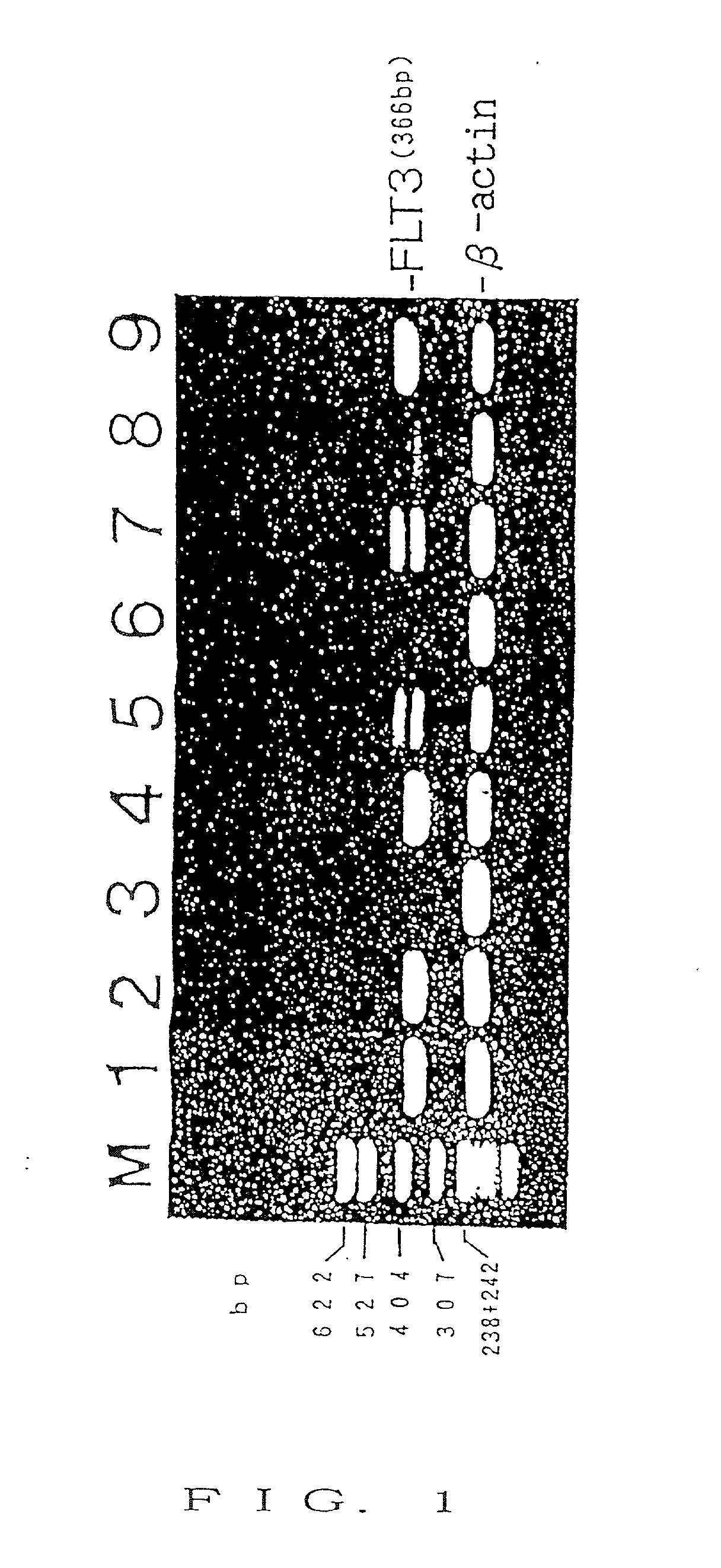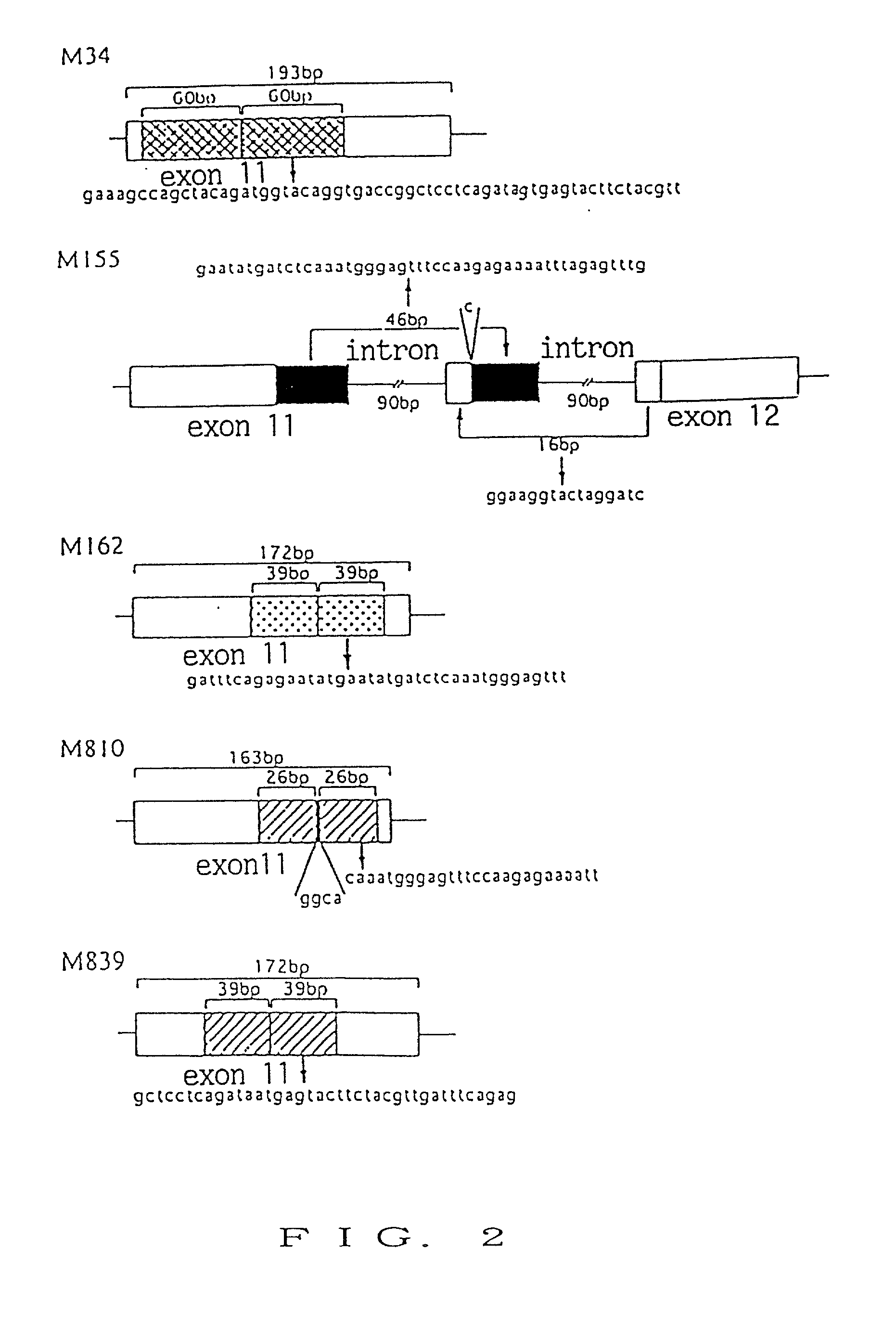Nucleic acid encoding receptor type protein kinase
a technology of receptor protein and nucleic acid, which is applied in the field of nucleic acid encoding a receptor protein kinase, can solve the problems of malignant alterations of leukemic cells and the structure and function of flt during hematopoietic stem cell differentiation, and have not been analyzed well
- Summary
- Abstract
- Description
- Claims
- Application Information
AI Technical Summary
Benefits of technology
Problems solved by technology
Method used
Image
Examples
example 2
[0102] Analysis of Mutations in Juxtamembrane of Receptor Protein Kinase and their Pathologic Relationship
[0103] To analyze mutations in a juxtamembrane of the receptor protein kinase and their pathologic relationship, the relationship between the pathologic classification of symptoms and FLT3 gene is shown in Table 1. Five cases showing tandem duplication in the nucleotide sequence of a juxtamembrane belonged to M2 (myeloblastic, with maturation potential), M4 (myelomonocytic), or M5 (monocytic) based on the FAB classification, and all of them were cases in which patients relapse into symptom to death even with transient symptom remission.
[0104] The nucleotide sequences of exon regions encoding tyrosine kinase domain were also analyzed, and no mutations were found in these regions.
[0105] Therefore, it was suggested that the in-frame tandem duplications in gene region encoding a juxtamembrane of FLT3 were associated with AML with monocyte growth was suggested.
[0106] Also, since such...
PUM
| Property | Measurement | Unit |
|---|---|---|
| total volume | aaaaa | aaaaa |
| length | aaaaa | aaaaa |
| agarose gel electrophoresis | aaaaa | aaaaa |
Abstract
Description
Claims
Application Information
 Login to View More
Login to View More - R&D
- Intellectual Property
- Life Sciences
- Materials
- Tech Scout
- Unparalleled Data Quality
- Higher Quality Content
- 60% Fewer Hallucinations
Browse by: Latest US Patents, China's latest patents, Technical Efficacy Thesaurus, Application Domain, Technology Topic, Popular Technical Reports.
© 2025 PatSnap. All rights reserved.Legal|Privacy policy|Modern Slavery Act Transparency Statement|Sitemap|About US| Contact US: help@patsnap.com


